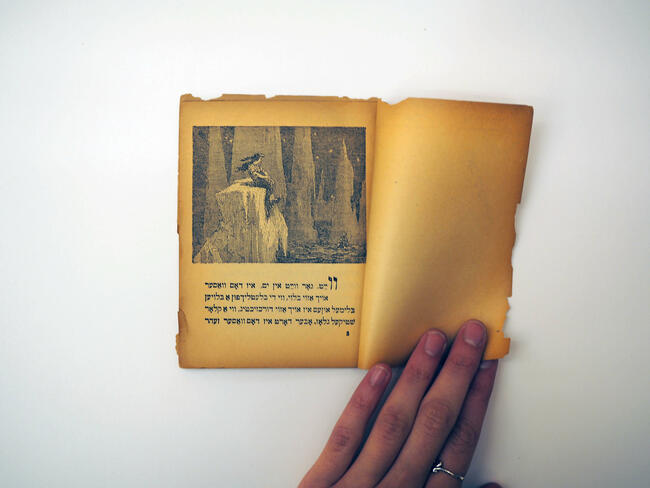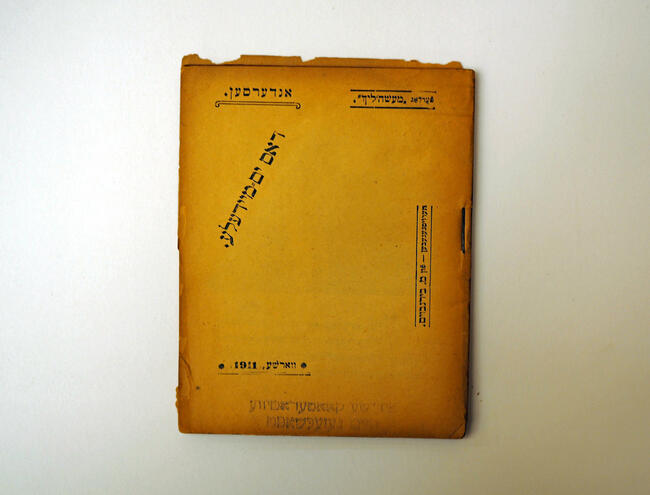"Dos yam-meydele" ("The Little Mermaid")
Fairy Tales and the Jewish Imagination
Hans Christian Andersen was the brain behind some of the world’s most important and recognizable fairy tales. Originally written in Danish, these stories have been translated into more than one hundred languages. One of the most famous of Andersen’s stories, “The Little Mermaid,” has been imagined and reimagined so many times that the original is almost unrecognizable.

"Dos yam-meydele," however, stays true to Andersen’s original. This book was originally published in 1911 in Warsaw. From the outside, it looks unassuming. No information about the origins of the book is given, save for the place of publication and the translator. Inside, however, are a series of intricate and unique woodblock illustrations that depict the little mermaid wearing flowing shirts (a significant change from the illustrations in the original Danish, which featured the mermaid with a bare chest) and flower crowns. Like many translations into Yiddish, "Dos yam-meydele" bears a clear stamp of the time and place in which it was published. From the orthography, which includes additional letters that are not typically used in Yiddish writing, to the more conservative imagery, this story was likely a favorite in the homes of many in the twentieth century.

This book is part of a larger series of short stories, all of which have a similar form: a tiny and delicate book held together by a single metal staple. It is a wonder that the book has remained intact after more than one hundred years, especially since it seems not to have been made to last.
—Alexis Aaeng
